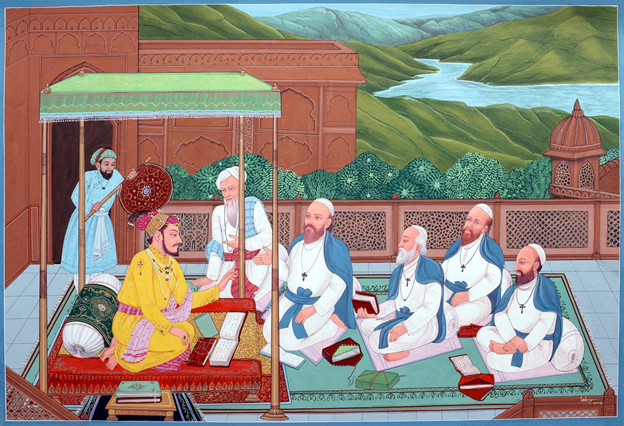
Dara Shikoh, also known as Dara Shukoh (20 March 1615 – 30 August 1659), was the eldest son of the Mughal Emperor Shah Jahan and his wife Mumtaz Mahal. Dara was not just a prince in line for the Mughal throne but also a notable philosopher, scholar, and proponent of religious harmony between Islam and Hinduism. His life, tragically cut short due to the brutal fratricidal politics of the Mughal succession, remains a fascinating study of the confluence of culture, religion, and power in 17th century India.
He was born into the opulence of the Mughal court, Dara Shikoh was given an education that befit a prince of his stature. His early tutelage included training in military tactics and exposure to the arts, but it was the realms of spirituality and philosophy that truly captured his imagination. From a young age, Dara Shikoh was deeply interested in Sufism, a mystical Islamic belief system, which would later influence his views on religious tolerance and harmony.
Dara Shikoh is perhaps best remembered for his earnest efforts to find a common spiritual ground between Islam and Hinduism, the two dominant religions in his realm. He believed in the universality of all religions and sought to prove that the essence of Hinduism and Islam was the same. This quest for spiritual unity is most vividly reflected in his scholarly works, where he delved deep into comparative religion studies, long before the concept became a recognized academic discipline.
Dara Shikoh’s vision was revolutionary, especially in an era characterized by religious orthodoxy and occasional fanaticism. He saw the Mughal Empire, with its diverse populace, as a garden wherein every flower (religion) had the right to bloom without fear. His efforts, had they been successful and not cut short by his political downfall, might have led to a significantly different socio-religious landscape in India.
Major Works
Among Dara Shikoh’s notable contributions to literature and philosophy, a few stand out for their impact and insight:
Majma-ul-Bahrain (The Mingling of the Two Oceans): This seminal work attempted to find commonalities between Sufism and Vedanta, the mystical sects of Islam and Hinduism, respectively. Dara argued that both sought the same truth and aimed for a union with the divine.
Sirr-e-Akbar (The Great Secret): In this, Dara Shikoh translated fifty Upanishads from Sanskrit into Persian, making these Hindu philosophical texts accessible to the Muslim scholars of his time. He claimed that the Upanishads were the hidden books referred to in the Quran, thus suggesting a divine unity of knowledge across these great religions.
Sakinat al-Auliya (The Peaceful Abode of the Saints): This was a biography of Muslim saints, which further illustrated his deep involvement in Sufism and his belief in the sanctity of the mystical pursuit of God.
Downfall and Death
Dara Shikoh’s religious beliefs and his close associations with Hindu scholars and saints were used against him by his brother Aurangzeb, who was his rival for the throne. Aurangzeb portrayed Dara as an apostate and a threat to Islam, which helped him secure support from the orthodox Muslim clergy and nobility. In 1659, following a bitter succession war, Dara Shikoh was defeated by Aurangzeb, captured, and executed on charges of apostasy and treason.
Legacy
Dara Shikoh’s legacy is a testament to the idea that religious and cultural harmony is not just possible but desirable for the unity and prosperity of a diverse society. His life and works continue to inspire scholars, spiritual seekers, and advocates of interfaith dialogue, serving as a reminder of the richness that such harmony can bring to the world. In a time when the chasm between religions seems to widen, Dara Shikoh’s vision offers a beacon of hope for reconciliation and mutual respect.
Though his dreams of ascending to the Mughal throne and implementing his ideals were dashed, Dara Shikoh’s philosophical and literary contributions have ensured his place in history not just as a Mughal prince, but as a visionary who sought to bridge the gap between two of the world’s great religions. His belief in the unity of all religions and his quest for spiritual harmony remain relevant, perhaps now more than ever.


